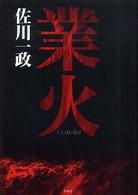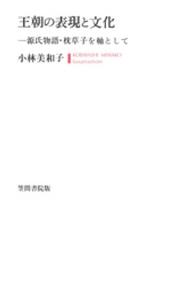- ホーム
- > 洋書
- > 英文書
- > Business / Economics
Full Description
Winner of IIE Book of the Month, December 2013
The introduction of reverse supply chains has created many challenges in network design, transportation, selection of used products, selection and evaluation of suppliers, performance measurement, marketing-related issues, end-of-life (EOL) alternative selection, remanufacturing, disassembly, and product acquisition management, to name a few. Under the guidance of an expert editor and with contributions from pioneers in the field, Reverse Supply Chains: Issues and Analysis addresses several important issues faced by strategic, tactical, and operation planners of reverse supply chains, using efficient models in a variety of decision-making situations providing easy-to-use mathematical and/or simulation modeling-based solution methodologies for a majority of the issues.
The book introduces the basic concepts of reverse logistics and systematically analyzes the literature by classifying more than 400 published references into five major types of product returns. It then identifies the basic activities and scope of reverse logistics, examining its drivers and barriers as well as major issues and challenges. The chapters cover metrics for quantitatively comparing competing new-product designs for end-of-life disassembly on a reverse production line, how to use the theory of constraints thinking processes to determine the core problems in reverse logistics, and an integrated multi-criteria decision-making methodology using Taguchi loss functions AHP (Analytic Hierarchy Process) and fuzzy programming. They explore issues associated with remanufacturing and green and resilient supply chain management and propose system modeling based on graph theory and network flows application to analyze material resource flows in the life cycle of a product.
Reverse supply chains is a new and fast growing area of research and only a handful of books are on the market, however t
Contents
Reverse Logistics. Issues and Challenges in Reverse Logistics. New-Product Design Metrics for Efficient Reverse Supply Chains. Application of Theory of Constraints' Thinking Process in a Reverse Logistics Process. Modeling Supplier Selection in Reverse Supply Chains. A General Modeling Framework for Cost/Benefit Analysis of Remanufacturing. Integrated Inventory Models for Retail Pricing and Return Reimbursements in a JIT Environment for Remanufacturing a Product. Advanced Remanufacturing-to-Order And Disassembly-to-Order System under Demand/Decision Uncertainty. Importance of Green and Resilient SCM Practices for the Competitiveness of the Automotive Industry: A Multinational Perspective. A Graph-Based Approach for Modeling, Simulation, and Optimization of Life Cycle Resource Flows. Delivery and Pickup Problems with Time Windows: Strategy and Modeling. Materials Flow Analysis as a Tool for Understanding Long-Term Developments.








